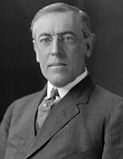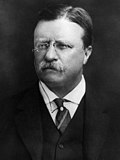| |||||||||||||||||||||||||||||||||
| |||||||||||||||||||||||||||||||||
 County results
| |||||||||||||||||||||||||||||||||
| |||||||||||||||||||||||||||||||||
| Elections in Alabama |
|---|
 |
|
|
The 1912 United States presidential election in Alabama took place on November 5, 1912, as part of the 1912 United States presidential election. Alabama voters chose twelve representatives, or electors, to the Electoral College, who voted for president and vice president.
Over the preceding twenty years, Alabama had become effectively a one-party state ruled by the Democratic Party. Disenfranchisement of almost all African Americans and a large proportion of poor whites via poll taxes, literacy tests[1] and extralegal violence[2] had essentially eliminated opposition parties outside of Unionist Winston County and a few other northern hill counties that had been Populist strongholds.[3] The only competitive statewide elections became Democratic Party primaries limited by law to white voters.
Because the supporters of the Populist Party had previously been frequently lily-white Republicans,[4] and Alabama had the most substantial white Republican support in the Deep South, Alabama’s white Republicans would after the 1901 constitutional convention immediately make efforts to expel blacks from the state Republican Party.[5] For the 1904 Convention, President Theodore Roosevelt rejected this proposal, unlike in North Carolina where he acquiesced without opposition to the demands of Jeter Connelly Pritchard.[5] During the rest of the decade, as conservative Democratic rule was consolidated throughout the state, the party did shift toward a more progressive policy,[6] although African-American convict labour was increased in the coalfields near Birmingham during strikes late in the decade.[7]
In the election year of 1912, Oscar D. Street was appointed state Republican Party boss as part of the black-and-tan faction loyal to incumbent president William Howard Taft and Columbia University President Nicholas Murray Butler.[8] At the same time, Theodore Roosevelt and governor of California Hiram Johnson planned “lily-whitism” for the South with the “Bull Moose Party” after Roosevelt broke from the GOP.[9]
No polls were taken in the state during the election season, and despite Roosevelt’s popularity even in the Solid South,[10] Democratic nominees former Princeton University President and governor of New Jersey Woodrow Wilson and governor of Indiana Thomas R. Marshall won Alabama easily with 69.94% of the popular vote, against the 26th president of the United States, with 19.24 percent to Roosevelt and 8.24 percent to Taft.[11]
- ^ Perman, Michael (2001). Struggle for Mastery: Disfranchisement in the South, 1888–1908. Chapel Hill, NC: University of North Carolina Press. p. Introduction. ISBN 9780807849095.
- ^ Feldman, Glenn (2004). The Disfranchisement Myth: Poor Whites and Suffrage Restriction in Alabama. University of Georgia Press. p. 157. ISBN 0820326151.
- ^ Webb, Samuel L. "From Independents to Populists to Progressive Republicans: The Case of Chilton County, Alabama, 1880-1920". The Journal of Southern History. 59 (4): 707–736. doi:10.2307/2210539. JSTOR 2210539.
- ^ Feldman, The Disfranchisement Myth, p. 151
- ^ a b Heersink, Boris; Jenkins, Jeffery A. (2020). Republican Party Politics and the American South, 1865-1968. Cambridge University Press. pp. 251–253. ISBN 9781107158436.
- ^ "Harris, "Braxton Bragg Comer (1901-11)"". Encyclopedia of Alabama.
- ^ Kelly, Brian (2001). Race, Class and Power in the Alabama Coalfields 1908-1921. Urbana: University of Illinois Free Press. ISBN 0252069331.
- ^ Casdorph, Paul D. (1981). Republicans, Negroes, and Progressives in the South, 1912-1916. The University of Alabama Press. pp. 70, 94–95. ISBN 0817300481.
- ^ Link, Arthur S. (January 1947). "The Negro as a Factor in the Campaign of 1912". The Journal of Negro History. 32 (1). The University of Chicago Press: 81–99. doi:10.2307/2715292. JSTOR 2715292.
- ^ Link, Arthur S. (July 1946). "Theodore Roosevelt and the South in 1912". The North Carolina Historical Review. 23 (3). North Carolina Office of Archives and History: 313–324.
- ^ "1912 Presidential Election Results – Alabama". Dave Leip’s U.S. Election Atlas.



